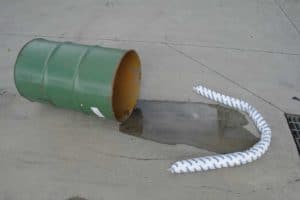To better understand the responsibility of business towards the environment, it may be prudent to first take a look at our attitudes as environmental advocates. Let’s take a glance at how as individuals, and as a community, our focus has shifted through time and experience from one of apathy to that of concerned bystander.
How often have you heard of people in top level positions making broad statements, or media advertising campaigns, sprouting the virtues of their environmental standing? If a business is singing from the rooftops about how ‘ we are saving the planet’ should the claims not be supported with action?
The answer is definitively yes, but so often the reality is different.
Whether for financial reasons or through a genuine lack of understanding, many businesses believe, wrongly, that they are strong in the area of environmentally friendly workplace responsibility. Through their OHS or SHE policies, a reduction of workplace incidents has been achieved successfully for many businesses. Charts on the wall celebrate the number of incident free days. Regular and consistent OHS training is available (and mandatory) for all staff. But on a
deeper level, the training and celebration is fragmented.
Risk management, as I discussed in a previous article, is a detailed and complex arena. It is often the more awkward method that must be applied to ensure OHS compliance. The wearing of high visibility vests or protective clothing in work areas is compulsory on most work sites. Safety hats (helmets), eyewear and gloves can protect an employee from many different and varied dangers in the workplace. All these are great measures that help
prevent workplace accidents – no doubt.
But what procedures do you know of, have been implemented in your workplace, for environmental protection?
Ask your boss if you have a policy in place. If you are the boss, take a look from a third party perspective. Look for those environmental products and procedures that ALL staff know and understand. Maybe you have a register of environmental aspects and impacts, an EMS (environmental management system) or a highly evolved section of the operations manual that pertains specifically to the environmental protection. Does your staff know and understand the procedure to follow in the event of a spill or when handling dangerous goods? Chances are that there will be a resounding maybe. Rarely, in larger organisations, will key people admit that they have an inadequate EMS in place.
Environmental policy is often controlled and managed by an environmental officer (OK, environmental manager – what’s in a title?). But historically, the overwhelming budgetary allocation within a business has been channeled into the most obvious areas of penalty potential – usually Occupational Health and Safety.
Now, here’s the rub.
Substantial penalties have been, still are and will (increasingly) be handed out by authorities for environmental recklessness. There, I’ve said it. You can get fined for failing to put adequate measures in place to prevent pollution.
So ask yourself the question, and be prepared to answer honestly and frankly.
Is your workplace pro-active regarding environmental protection?
If yes…. then congratulations to you. If you answer ‘I think so’, then I would recommend you look again, objectively. Or inspect your site with a colleague. If your answer is no, then you should be praised for your honesty, and seek the advice of an environmental company or consultant that can help.







